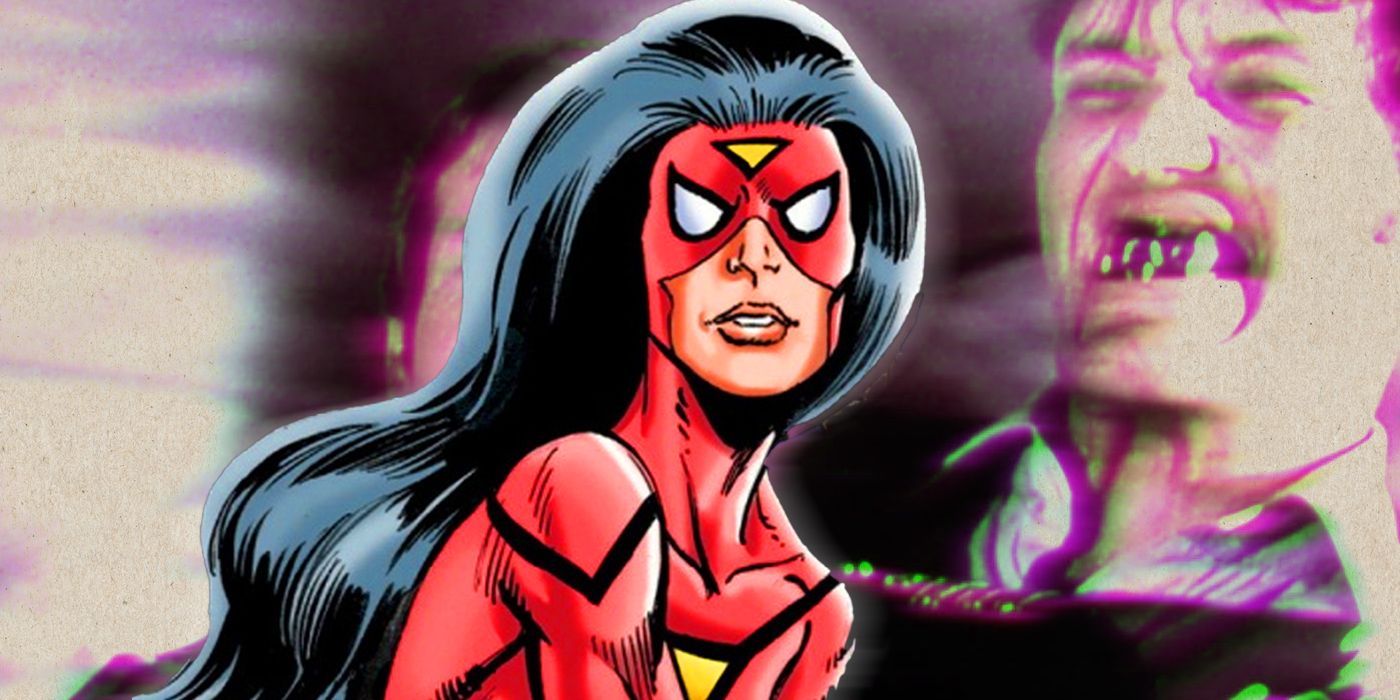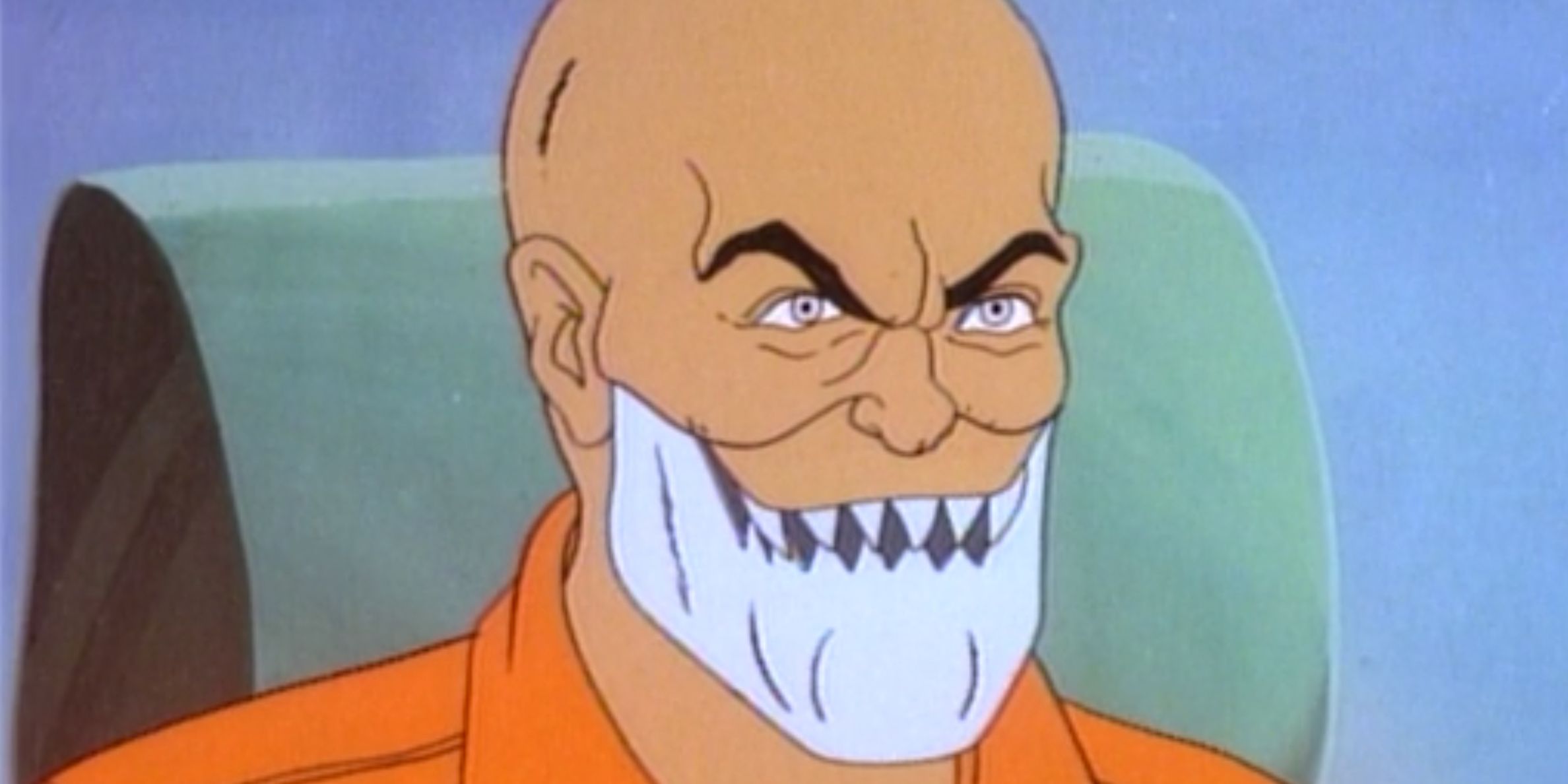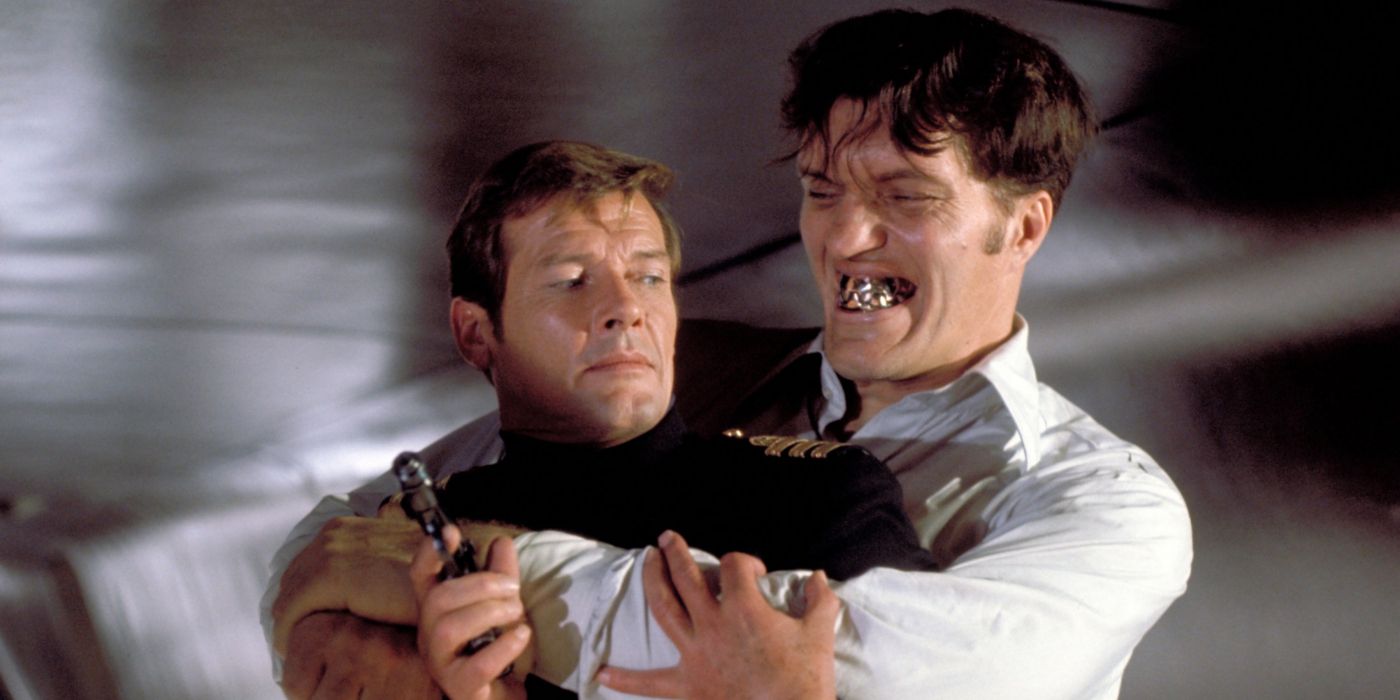Portrayed by Richard Kiel and first appearing in 1977's The Spy Who Loved Me, Jaws is one of the most iconic James Bond villains of all time. With his giant metallic teeth, Jaws was able to bite through pretty much anything -- even going so far as to assassinate targets by chomping on their jugular veins -- and could also survive car crashes, electrocution, shark encounters and other unlikely events. Jaws proved so popular as a villain that he returned in The Spy Who Loved Me's 1979 sequel, Moonraker. And in that same year, an episode of Spider-Woman offered its own take on the character.
Titled "Shuttle to Disaster," the episode sees Jessica Drew/Spider-Woman going on a special civilian space flight by NASA with friends Jeff and Billy. However, the ship is hijacked by Steel Jaw, a villain whom Spider-Woman had unknowingly helped sneak aboard. Soon, the ship lands on the moon and Steel Jaw forces the passengers to mine for precious moon diamonds. In the end, Spider-Woman takes down the villain and apprehends him before he can escape.
Like the iconic Bond villain, Steel Jaw has terrifying metal chompers and an intimidating presence. The makers of Spider-Woman make good use of Steel Jaw's signature feature, and he shreds several metal objects in the episode. But unlike Jaws, Steel Jaw is a criminal mastermind rather than a henchman. His physical design is different too, with the entire lower half of his face replaced by a metallic chomper. Still, the resemblance between the two is clear, and Steel Jaw is very clearly meant to pay homage to Jaws.
Beyond Steel Jaw, "Shuttle to Disaster" has some startling parallels with Moonraker, which was released five months prior. Both feature an opening heist scene and build to a passenger-filled space shuttle launch.There are also plenty of visual similarities between the two works, such as the design of the henchmen's jumpsuits. Finally, Spider-Woman even calls the villains moonrakers, a clear indication that the episode -- which would have likely been produced around the same time as Moonraker -- was in at least some way aware of the Bond film.
Of course, Moonraker itself is a film that takes heavy inspiration from its contemporary movies. While For Your Eyes Only was supposed to be the Bond film released in 1979, the unprecedented success of 1977's Star Wars caused producer Albert R. Broccoli to focus on giving Ian Fleming's spy a sci-fi adventure. This resulted in an incredibly loose adaptation of Fleming's Moonraker book, with which the movie really only shares a name, and the only Bond film to go into space.
The case of Moonraker and "Shuttle To Disaster" is an interesting example of how filmmakers inspire their contemporaries. While hits like Star Wars influenced the Bond franchise, Moonraker itself inspired Spider-Woman, making for a fascinating cultural oddity that connects three huge franchises in the span of only two years.



